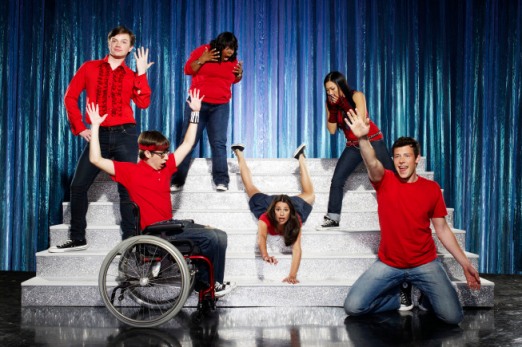
As an avid jazz lover who grew up with Miles Davis and John Coltrane, the state of jazz music today makes me a bit disheartened. With New York’s only smooth jazz station going under last year, the controversy surrounding Herbie Hancock’s win for Best Album at the 2008 Grammys, the Weather Channel reformatting their Local on the 8s soundtrack from smooth jazz to rock, and jazz artists discussing the siege of their genre, less and less people are getting turned onto it as time goes on. While jazz used to have the reputation of pulling directly at heartstrings with heavy use of the brass section (saxophone, trumpet) and instrumentals, now younger people are connecting more with crass hip-hop and empty rock and roll lyrics. All of this bad news makes me think that one of my favorite musical categories is going to end up with a grim future. Is this really going to be the case? If there’s a way, how can the music industry draw people back into the world of jazz?
I think the reason why our generation isn’t connecting to jazz as much as our parents or grandparents is because, aside from the amount of diverse music we have nowadays, is that we don’t really have many jazz artists we can relate to. The youth of today often compare jazz to elevator music, music our parents like to listen to on car rides or the weak pieces we had to play or listen to in high school music classes. For the most part, our exposure to this sort of music has been mediocre at best, so no wonder only a small percentage of people aged 18 to 34 like jazz. In order to draw a more youthful audience to jazz, there needs to be a good representative for the genre. That representative needs to have charisma and talent, and should have the gift to correlate different styles of music with jazz.
The man who best exemplifies all of the above is Brit Jamie Cullum. Releasing his first studio album, Pointless Nostalgia in 2001 and his latest, The Pursuit, this month, Cullum has become the United Kingdom’s biggest selling jazz artist of all time. While he often sings updated takes on standard classics, he also likes to sing covers of more modern songs, such as Pharrell Williams’ “Frontin'” and Radiohead’s “High and Dry”. His energetic showmanship, cool demeanor and fashionable style make him relatable to the younger generation, despite the fact that he plays an older style of music.
If it takes a physical change to get ears to listen to jazz, then so. If the artist’s music is just as decent as his style of dress, that makes things a lot better. The kids will take anybody who looks good seriously nowadays, though. Luckily an artist such as Cullum, who has both the look and the talent, draws in listeners from both the jazz world and the VH1 crowd. Should more jazz artists cross over as well as he, the jazz industry as a whole would be in a lot less danger from extinction.



 The breakthrough dramedy of the 2009 television season, Glee, has taken America by store. Ever since the pilot premiere after the American Idol finale in May, young and old alike have been addicted. Ratings for the series steadily go up each week due to positive word-of-mouth, and merchandise have been selling like wildfire. Each episode’s songs jump straight to the top of the charts when they go on sale on iTunes. The release of the Glee soundtracks and season DVDs are sure to sell out in an instant. Gleek t-shirts and buttons are religiously worn by the devoted followers, and posters are plastered on many walls. The Glee actors have just started a mall tour, and those are bound to be filled to capacity with screaming, sobbing fangirls (and some fanboys, as well).
The breakthrough dramedy of the 2009 television season, Glee, has taken America by store. Ever since the pilot premiere after the American Idol finale in May, young and old alike have been addicted. Ratings for the series steadily go up each week due to positive word-of-mouth, and merchandise have been selling like wildfire. Each episode’s songs jump straight to the top of the charts when they go on sale on iTunes. The release of the Glee soundtracks and season DVDs are sure to sell out in an instant. Gleek t-shirts and buttons are religiously worn by the devoted followers, and posters are plastered on many walls. The Glee actors have just started a mall tour, and those are bound to be filled to capacity with screaming, sobbing fangirls (and some fanboys, as well). The latest controversial chronicles of David Letterman keeps evolving. After the revelation that he had an affair with a handful of female employees from Late Show with David Letterman, more confessions from those female employees are coming out. Along with this, it has been discovered that there are hardly any women writers on most late-night talk shows. So, what gives? Why is there such an uneven ratio of men-to-women on late night?
The latest controversial chronicles of David Letterman keeps evolving. After the revelation that he had an affair with a handful of female employees from Late Show with David Letterman, more confessions from those female employees are coming out. Along with this, it has been discovered that there are hardly any women writers on most late-night talk shows. So, what gives? Why is there such an uneven ratio of men-to-women on late night?

 With
With  Long Island has been known to have slightly higher cancer rates than any other area in the New York-Metropolitan area. Scientific studies still cannot prove the link to these
Long Island has been known to have slightly higher cancer rates than any other area in the New York-Metropolitan area. Scientific studies still cannot prove the link to these  The trend of saving the environment by “going green” has been slowly building into a stronger movement over the past few years. After
The trend of saving the environment by “going green” has been slowly building into a stronger movement over the past few years. After